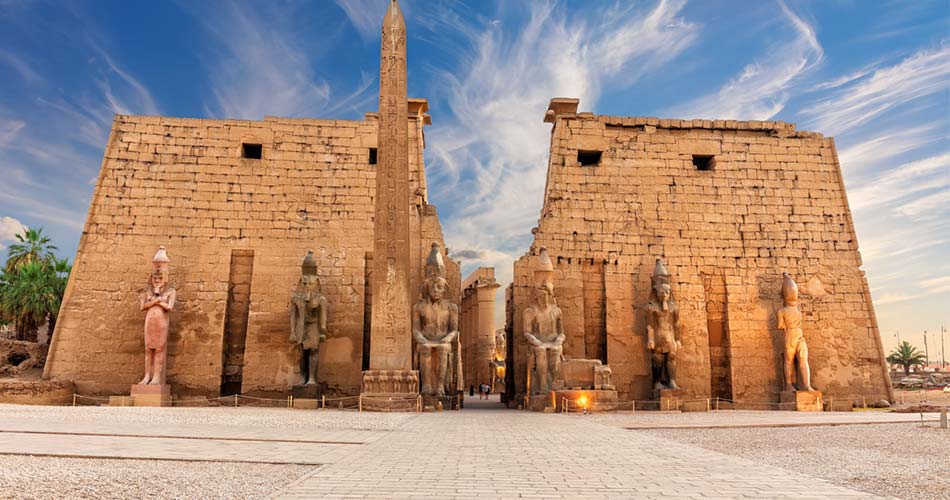Luxor Temple is an ancient temple complex
Luxor Temple located on the east bank of the Nile River in Luxor, Egypt.
It was built during the New Kingdom period of ancient Egyptian history, around 1400 BCE, and was dedicated to the god Amun and his wife Mut and their son Khonsu.
The temple was constructed over the course of many years, with various pharaohs and rulers adding their own touches and additions. The original temple was built by Amenhotep III, but it was later expanded and renovated by Tutankhamun, Horemheb, and Ramesses II, among others.
The temple complex is made up of several different buildings and structures, including a massive entrance pylon, a courtyard, a hypostyle hall, several smaller chapels and sanctuaries, and a sacred lake. The temple’s walls and columns are covered in intricate carvings and hieroglyphics, depicting scenes from ancient Egyptian mythology and history.
One of the most famous features of the temple is the Avenue of Sphinxes, a long corridor lined with sphinx statues that once connected Luxor Temple to the nearby Karnak Temple. The avenue was built by Nectanebo I in the 4th century BCE, and was later expanded and restored by the pharaohs Amenhotep III and Ramesses II.
Luxor Temple played an important role in ancient Egyptian religion and politics. It was the site of many important ceremonies and festivals, and was also used as a center of government and administration. It was believed that the temple was the home of the god Amun, and that he would visit the temple every year during the Opet Festival.
Today, Luxor Temple is one of the most popular tourist attractions in Egypt, drawing thousands of visitors each year. Its stunning architecture and intricate carvings offer a fascinating glimpse into the world of ancient Egypt, and its rich history and cultural significance continue to captivate and inspire people around the world.
Certainly! Here are some additional facts and information about Luxor Temple:
– The temple’s original name was “ipet resyt,” which means “the southern sanctuary.” This name distinguished it from the Karnak Temple, which was known as “ipet isut,” or “the northern sanctuary.”
– The entrance to the temple is marked by two massive stone obelisks, which were originally a pair but are now separated. One of the obelisks remains at the temple, while the other was gifted to France and now stands in the Place de la Concorde in Paris.
– The temple’s hypostyle hall is one of its most impressive features, with 134 massive columns arranged in 16 rows. The columns are decorated with intricate carvings and hieroglyphics, and are topped with lotus and papyrus capitals.
– The temple was used as a Christian church during the Roman period, and several of the temple’s original features were modified or covered up. For example, a Coptic church was built in the temple’s courtyard, and many of the temple’s statues were defaced or destroyed.
– The temple was buried under sand and debris for many centuries, and was only rediscovered in the 19th century. The French archaeologist Gaston Maspero led a team that excavated the temple in the 1880s, revealing its stunning architecture and rich history to the world.
– Luxor Temple is often used as a backdrop for cultural events and performances, including the annual Luxor International Ballet Festival and the Luxor African Film Festival. In recent years, the temple has also been the site of several important archaeological discoveries, including the remains of a statue of Ramses II and a pharaonic-era tomb.
– Today, Luxor Temple is recognized as a UNESCO World Heritage Site, and is considered to be one of the most important and iconic monuments of ancient Egypt. It remains a popular tourist destination, offering visitors a chance to explore the rich history and culture of one of the world’s oldest civilizations.



